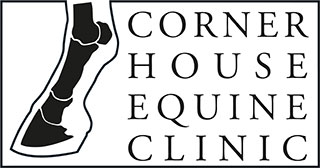What are Sarcoids?
Sarcoids are a relatively common tumour seen in horses of all kinds. Although they generally cause no major health problems because they are limited to spreading on the skin alone, the presence of sarcoids can cause irritation, problems with tack and a loss of value if selling your horse.
It is believed that sarcoids are caused by a virus spread between horses by flies which takes advantage of small wounds in your horse’s skin. They are seen most commonly around eyes, ears, chest, the belly and the lower limbs. Some horses may only have one sarcoid whilst others may have several across their body.
How do I recognise a sarcoid on my horse?
Sarcoids can present in a number of different ways:
- Flat: Hairless areas of dry, thickened, hairless skin.
- Nodular: rounded often hairless lumps.
- Fibroblastic: can appear like a wound that doesn’t heal as expected.
- Verucose: Wart like lump.
- Malevolent: can spread along the skin causing a chain of lumps and ulcers.
Sarcoids are usually only small but can grow over 10 cm in some cases. Some appear very similar to other skin tumours seen in horses. If in doubt ask your vet to take a biopsy (sample) or remove the whole tumour to send for identification at a lab.
How do I stop my horse getting sarcoids?
There is no reliable way to avoid sarcoids. Reducing contact with flies using fly repellent and fly rugs may help to reduce spread. It is also important to keep wounds clean and protected to avoid them becoming a target for flies.
How can sarcoids be treated?
Several different types of treatment exist for sarcoids and more than one may be used at a time depending on the type and location of the lesions. The tumours are easier to remove when they are small. However, there is a high risk of recurrence and sometimes issues with healing following removal.
Options for treatment include:
- Surgical removal: Small tumours can be removed using local anaesthetic and sedation to cut around the lump and remove it. Depending on location and number of lesions it may be safer and more effective to remove the sarcoids under a general anaesthetic. The resulting wound will either be sutured or left to heal depending on its size. Following removal alone around 50% of sarcoids will reoccur.
- Ligating with rubber rings: This only works on sarcoids which stick outwards and doesn’t remove the whole of the tumour. A tight band is applied around the tumour cutting off the blood supply. After a few days the part of the tumour with no blood supply will fall off.
- Freezing: This causes the tissue to die away. If the sarcoid is large the bulk of it should be removed surgically first. There is less recurrence this way but scarring is likely to happen
- Laser surgery: A laser is used to cut away the bulk of the sarcoid and cauterise the resulting wound at the same time.
- BCG vaccination: Repeated injections of a vaccination against bovine TB have been used in the past to stimulate an immune response against the sarcoid virus. It is usually used for sarcoids on eyelids but due to requirements for use of the vaccine in people this method is not easily available.
- Chemotherapy: Skin killing creams can be prescribed by a vet to apply onto sarcoids. They can be very effective but care must be taken as they will also attack healthy skin and can do a lot of damage, particularly if applied over blood vessels. The creams will also damage your skin if you come into direct contact with them. Injections of skin killing chemicals can also be used alongside surgery.
- Radiation therapy: Specialised equipment is used to apply a dose of radiation directly to the sarcoid. This method carries some risk to the person applying the radiation so your vet would have to have undergone extra training to use this method.
Discussing the options with your vet is very important to find the right treatment for you and your horse.
- Advice published on horsehealthprogramme.co.uk


